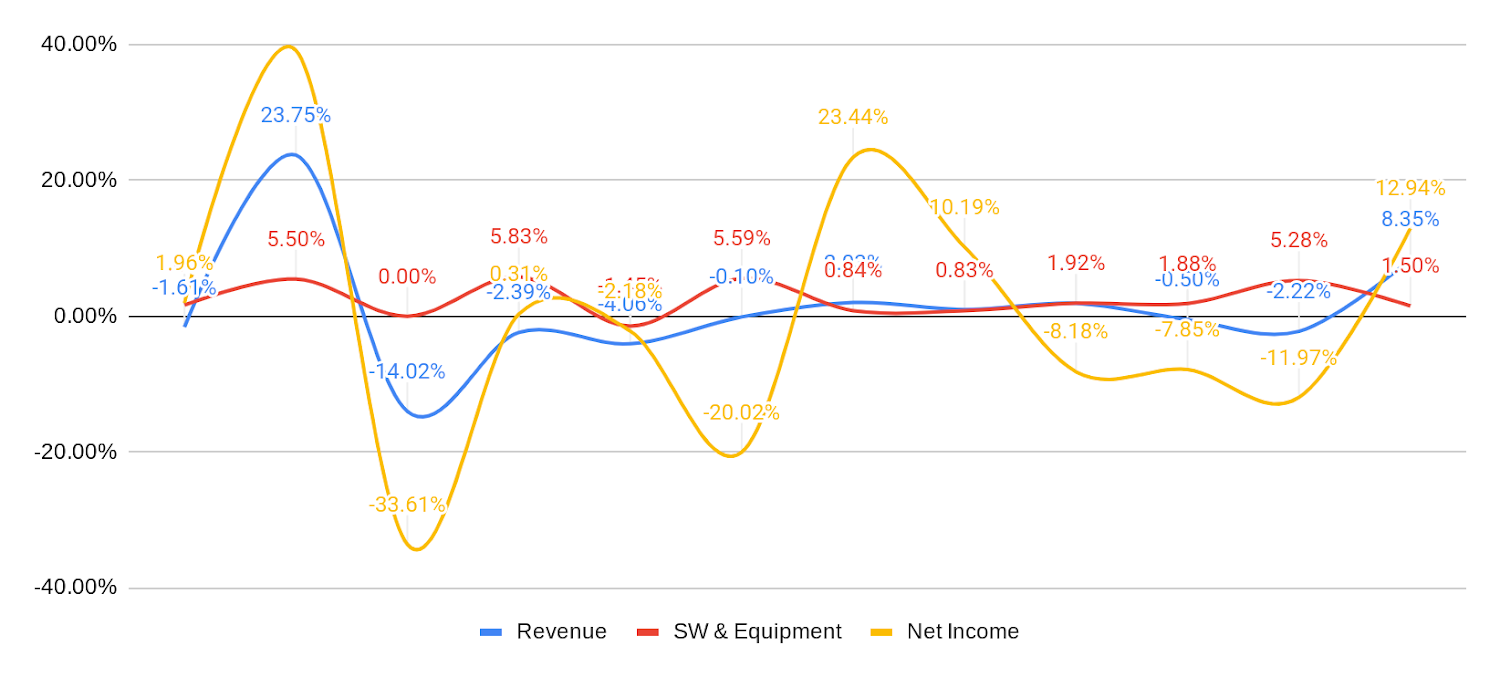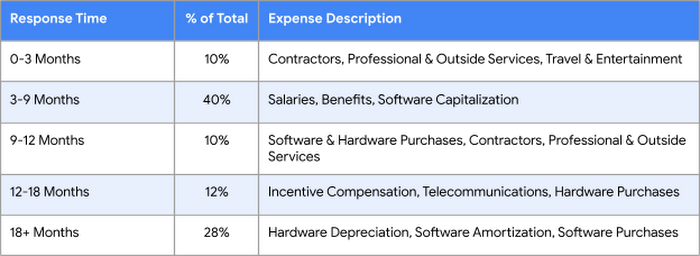Cloud Econ 104: Why elasticity in infrastructure matters in good times and bad

James Tsai
Financial Services Lead, Customer Value & Transformation Advisory, Google Cloud
Howard Rubin
CEO, Rubin Worldwide
Whether driving innovation in boom times or controlling costs in lean times, the scalability of cloud is becoming essential.
Welcome back to Cloud Economics, in session for the new semester.
Previously, we discussed how cloud computing can help firms improve their financial performance, specifically revenue growth, cost reductions, and optimized technology investments. We also covered frameworks for connecting IT investment measures to business performance.
Now it’s time to look at how adopting cloud computing can help organizations create not just better overall IT investment returns, but also better financial responsiveness, helping to reduce costs during economic downturns and optimize cost per transaction in growth cycles.
This involves using cloud computing to rapidly reduce costs during economic downturns, and to optimize the cost per transaction in growth cycles. These dual impacts can help firms to not just optimize but also stabilize their operating margins over time by creating more responsive cost structures in their business.
The slow cost responsiveness of legacy infrastructure
While on-premises environments once formed the backbone of enterprise IT, traditional infrastructure has significant implications on a firm’s ability to quickly and efficiently modify underlying technology cost structures. Even as more organizations leap to the cloud, the economic advantages of this shift are still not well understood.
Adding capacity to on-premises landscapes necessitates meticulous planning, and a significant upfront capital investment. Companies must also be able to anticipate peak demand, such as holidays, far in advance and then overprovision to accommodate spikes. Some companies, such as regulated financial institutions, even go as far as overprovisioning capacity two to three times their last known peak demand; a recent analysis we preformed of on-premises environments showed the highest average CPU utilization across organizations is around 23%, despite targets being nearly triple that number, indicating that up to two-thirds of installed capacity goes to waste.
Major capital expenditures, such as infrastructure, tend to have an optimal life of four to five years, consistently impacting a company’s income statement, regardless of demand fluctuations. In other words, the costs to the business remain the same even during times when demand is low.
Overprovisioning infrastructure doesn’t just waste capital dollars, it increases operational expenses, such as electricity, cooling, and maintenance costs. If growth does somehow manage to outpace existing capacity, it can take months to expand and may require interrupting business operations. Even worse, organizations often end up missing out on new opportunities or experiences negative impacts on customer experience while they wait.


The chart above shows the quarter-over-quarter change in core technology expenses vs. revenue and income for a large financial institution. Notably, their technology expenses appear to be largely unaffected by either business growth or declines.
Many companies mistakenly regard a fixed cost basis for technology as a benefit, citing it as a factor for increasing profitability in a scenario where costs stay constant as revenue rises — a term referred to as operating leverage. While that generally makes sense for some fixed costs, for technology, it means that their average cost per transaction is too high. Put more simply, if you aren’t using two-thirds of your systems’ capacity — you’re overpaying the same on a per-transaction basis.
When demand sags in down cycles, the fixed nature of on-premises IT spend also makes it harder to reduce costs. A recent analysis by Rubin Worldwide found that upwards of 20% of IT budgets are spent on capital expenditures, which locks in their income statement impact for years. As a result, organizations aren’t able to reduce IT infrastructure expenses during down cycles, leading them to cut into more critical (and often over-utilized) resources — their workforces.
Example cost responsiveness in a typical IT P&L:


What changes when you move to cloud-based infrastructure?
We’ve broken down the primary disadvantages of traditional IT infrastructure, now let’s take a look at the financial advantages of migrating to the cloud.
Improved infrastructure responsiveness
Unlike fixed on-premises environments, a well-architected cloud infrastructure automatically optimizes usage and spending according to near real-time needs. In boom times of peak demand, cloud scalability and pay-as-you-go pricing models prevent overspending on idle capacity by enabling you to spin up compute resources on demand and then scale back down as traffic drops. Instead of purchasing excess capacity months or years in advance, organizations pay based on their current workloads without wasting expenditure on unused servers.
Improved cost attribution
Beyond helping to optimize costs, the cloud can also improve financial attribution compared to legacy IT environments. Cloud platforms provide detailed usage metrics at the project level, providing more insights and transparency into variable spending that can be used to enhance predictive algorithms or guide cost allocations. Correlating infrastructure expenses directly to platform activity, for example, are more effective and reliable at revealing profitability drivers than revenue-based or employee-based cost allocation schemes.
Many companies mistakenly regard a fixed cost basis for technology as a benefit, citing it as a factor for increasing profitability... But if you aren’t using two-thirds of your systems’ capacity — you’re overpaying the same on a per-transaction basis.
Lower cost growth and innovation
The most familiar and widely-known cloud benefit is its ability to drive innovation. More specifically, cloud platforms allow teams to experiment with new products, services, and technologies without massive upfront investments. When businesses grow, infrastructure grows — often at a global scale. A media company launching an on-demand streaming service could start small and rapidly expand globally on cloud infrastructure. An enterprise rolling out a new IoT product can instantly scale to support rapid adoption.
Rather than worrying about capacity limitations, companies can instead focus on innovation and meeting customer needs. In the event that growth is slower than expected or you need to pivot your business, the cloud provides the flexibility to adapt infrastructure according to the pace of the business without incurring high costs.
Conclusion
In both down cycles and periods of growth, the cloud provides responsiveness and optimization that can help improve and stabilize margins. By doing away with fixed assets and excess capacity, the cloud effectively and dynamically aligns infrastructure expenses with workloads. This smart approach to optimization grants enterprises the financial flexibility and agility they need to rapidly capitalize on growth and opportunities to innovate.
Join us next month for the final lesson in our cloud economics series, where we review our studies so far and look at the macroeconomic implications.



